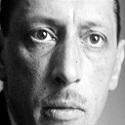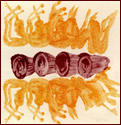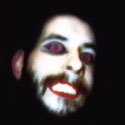|
There is a long history in academic music involving the use of more or less strict mathematical processes to generate content and structure in compositions. I enjoy a lot of this area of music so I thought I'd do a little writeup for NMD, not expecting it to be a huge thread but I'm sure some other people might be into it. All this music (even though a MASSIVE range of styles and sounds are gonna be contained in this post) is often criticized for being clinical, soulless, lazy, etc. etc. I don't really care to argue. One thing I like about a lot of it is that it is relatively "unemotional" for me: it's music that evoked something natural, strange, or passive, without dragging me into my own human stuff. (edit: And, on second thought, a lot of this music is actually quite the opposite - Reich, Eastman, Schoenberg, and others made music which was explicitly political, religious, and otherwise powerful and real as any traditionally composed music. So it's not all airy aestheticism and nothing else!!) I also think in some sense getting away from being narowly "human" is one of the best goals an artist can have, and a strict process can sometimes be a good way to do that. Everything above could be (and is) said for Oulipan literature as well, which has given us some of the best and funniest pieces of writing in history, so, here we are. TWELVE-TONE TECHNIQUE At the turn of the century, after strict tonality had fallen by the wayside, there was a short period of "free atonality" where composers where engaging in freewheeling, totally new, ultramodernist work. Henry Cowell, in his book New Musical Resources (which should be read by anyone interested in 20th century academic music), outlined many of the techniques of this period, including polymeter, polytempo, harmonies based on seconds or fourths instead of thirds, dissonant counterpoint, etc. But a lot of composers were looking for something with more formal rigor, a way to organize their music logically rather than just flying by the seat of their pants all the time. Several systems were invented, but most were unique to a single composer. However, at the end of his book, Cowell hinted that another composer, Schoenberg, was going to shortly publish his own method for organizing his compositions, the twelve-tone technique. That's the one that stuck around. Basically, the twelve-tone technique is: take all twelve notes in the scale, organize them into a row in whatever order you want, and then use that row as the basis of your composition in much the same way a composer would base his composition on the key of G or whatever. The composer often uses a matrix like this to organize his composition:  Despite what many people think, the early twelve-tone compositions were fairly free as far as the composer's decision-making goes, maybe even more so than traditional tonal music; the composer had total freedom in choosing duration, instrumentation, articulation, dynamics, form, etc. etc. https://www.youtube.com/watch?v=xrjg3jzP2uI TOTAL SERIALISM This all changed when a bunch of upstart Americans got their hands on the technique and decided "what the gently caress is the row for if we're just gonna use it for pitches; let's have it decide EVERYTHING." Well, more or less. At its most extreme, the row really did determine everything from dynamics, articulation, rhythm, structure, etc. Obviously this music was fantastically difficult to play. Composing it was in some ways similar to setting up a Rube Goldberg device and then watching it all play out (not to diminish the work involved in setting it up - there is a lot of theory involved in why a composer chooses one row and not another). A lot of people hated this music, and it is extremely "of its time." Much of the "chance" and later "minimalist" music that came in the period of the late 50s and 60s is a direct reaction against the principles of total serialism that held sway in universities after WWII. https://www.youtube.com/watch?v=FIo15gWMheA One of my favorite serial pieces is Milton Babbitt's All Set, which, funny enough, emulates a jazz ensemble. It even has a sort of jazzy structure, in which "ensemble" parts alternate with "solo" parts (though of course it's all strictly composed and not improvised). The title is of course a pun: "all set?" is something jazz bandleaders say and also refers to the "set" of notes in the tone row, which controls everything in the piece. https://www.youtube.com/watch?v=s11zaVuqzlE CONLON NANCARROW Nancarrow was a mad genius who exiled himself to Mexico during the Red Scare and dedicated his entire life to making insanely, unbelievably complex compositions for player piano. Yes. These compositions are mostly based on multiple tempos being played at once; nobody living could play them at the time, so player pianos were the next best thing. Nancarrow's Study No. 40, "Transcendental," has the piano playing tempos in a ratio of e against pi. Other compositions have the piano playing in as many as 5 or more tempos at the same time. http://www.kylegann.com/cnworks.html https://www.youtube.com/watch?v=f2gVhBxwRqg XENAKIS The Greek composer Iannis Xenakis is widely known for his incredible and pioneering electronic music. He is also famous for his instrumental works, in which he uses complex mathematical concepts to determine many facets of the composition - from geometry, to game theory, to stochastic theory, to physics. One of the central themes of his work is that an artistic expression in any medium can be converted directly to any other medium; the medium is in some sense arbitrary and requires only conversion. Take for example his piece Metastasis for orchestra, which involves unique parts for over 100 violins. Xenakis was an architect in addition to a composer, and this piece is a direct translation of the Philips Pavilion into music. The curves of the building are mapped precisely onto sliding notes in the violins. The sound of the piece is also influenced by Xenakis' memories of the sounds of warfare, in which no individual gunshot was distinguishable in the general chaos, and by Einstein's physics. Another example is Psappha, a work for percussion in which rhythmic cells taken from the poetry of Sappho are used as the basis of the entire composition. https://www.youtube.com/watch?v=1CT5nSkePzg JOHN CAGE AND CHANCE PROCEDURES Cage is probably most famous for his "silent piece," 4'33", but if you know anything he's done besides that it's probably his work with the I Ching. The I Ching is a Chinese book used for divinations. The (pretty old) copy I have says the most serious and authentic way to use it is by some process of tossing sticks, but Cage used the (more common in the West) coin-flipping method (and later even had a computer program do the flipping for him!). He used to I Ching to organize works, to choose pitches and durations, and even to randomly choose words out of the dictionary to compose texts. He wasn't too strict about the method though, making adjustments "to taste" if necessary, and sometimes he even forgot exactly how he put together certain compositions. The point here is to loosen the composer's grip on the composition, minimize artistic "ego" and imitate natural processes, which unfold on their own without any particular will behind them. http://www.biroco.com/yijing/cage.htm https://www.youtube.com/watch?v=B_8-B2rNw7s REICH AND PHASING One thing you may have noticed in pretty much everything I've posted so far is that NONE OF THE drat PROCESSES ARE AT ALL AUDIBLE TO THE AVERAGE LISTENER. Unless you have a specialized degree in the field you are probably not gonna recognize the tone row in a serial composition just by listening, and it's not at all obvious that the random poo poo going on in Cage is the result of a very specific procedure of coin flips. So who cares right. Well, this is where the minimalists come in. Specifically Steve Reich, who wrote a short essay on this very subject that serves as a kind of manifesto. http://ccnmtl.columbia.edu/draft/ben/feld/mod1/readings/reich.html Music as a Gradual Process, Steve Reich posted:I do not mean the process of composition, but rather pieces of music that are, literally, processes. Reich's technique in particular was called "phasing," which he first discovered as a result of two tape players playing the same recording gradually going in and out of sync. His early tape phasing pieces were political; the quintessential example is Come Out, which uses a recording of an interview of a victim of violence during a Civil Rights protest. https://www.youtube.com/watch?v=g0WVh1D0N50 Eventually Reich figured out how to do this with human beings, which involved two (or more) people playing the same thing, then one of them speeding up slightly until they're one beat off from the other performer, etc. etc. This resulted in a series of phasing pieces, and the technique would more or less dominate Reich's career for decades after. https://www.youtube.com/watch?v=AnQdP03iYIo Other "minimalist" composers used techniques that weren't as strict (Glass, Riley, Young, and the greatest of them all, the criminally undervalued Julius Eastman) so I won't discuss them in detail here. POSTMINIMALISM After the initial wave of minimalism, in the late 70s and 80s, a number of composers began taking the basic techniques (repetition, gradual process, dialogue with popular music) and incorporating material that the original minimalists didn't use: dissonant harmonies, more complex procedures, etc. (Eastman was ahead of his time on some of this stuff.) One form of postminimalism popular in the New York "downtown" scene was "totalism," which was basically an attempt to fuse academic rigor in composition with a vital energy more common to popular (rock) music (so you'd have the "total" spectrum of listeners engaged, yeah?). Glenn Branca and Rhys Chatham are probably the most famous "totalists." Kyle Gann is more famous as a critic, but he's always been a central composer in the totalist/postminimalist style as well. His hilariously outdated and corny looking website is actually a pretty good resource. This page has a bunch of free mp3s of his music and nice compositional notes to go along with them: http://www.kylegann.com/Gannaudio.html Southern Harmony by William Duckworth is an absolutely beautiful album in this style. Duckworth combines old "shape note" church music with minimalist process and techniques. The result is pretty amazing. The recording I have also comes with a fantastic set of notes explaining the techniques behind each piece. It's also pretty impressive for the light it sheds on the original church songs - many of the "modern" dissonant harmonies you may notice are actually directly from the source material! (I can't find a youtube with music from this but you should listen to it, it's amazing.) JOHN LUTHER ADAMS John Luther Adams is an Alaskan composer who uses a common postminimalist technique - each instrument playing a loop of a different length, so they go in and out of sync - in a totally unique way that gives one the feeling of void or desolation inherent in the wilderness of his home state. His music is also far, far superior to the work of the elder John Adams (no relation), a fairly milquetoast minimalist imo who is nonetheless very popular. https://www.youtube.com/watch?v=ViyldrW7ag4 ALVIN LUCIER Lucier is known for using techniques which create audio from physical processes: the vibration of a string, the resonance of a room, etc. One of his compositions, "Music On A Long Thin Wire," was denied a copyright because the office reasoned that it was simply a demonstration of a physical effect and not a composition at all. His most famous piece, "I Am Sitting In A Room," involves Lucier reading a short paragraph about his stuttering into a tape recorder, then playing it back and recording it on another recorder, then playing THAT tape back, etc. etc., over and over again until the natural resonance of the room takes over and his words are mangled into a series of fairly haunting and strange harmonies and ethereal tones. https://www.youtube.com/watch?v=2jU9mJbJsQ8 JAMES TENNEY Like Lucier, Tenney's pieces illustrate basic structural or physical conceits. His "Postcard Pieces" are a series of short minimalist works, each made up of a couple directions on a little card, which work out simple formal concepts like "start quiet and get loud and then get quiet" or similar. His piece "For Ann {Rising}" is a series of Shephard tones (basically a few notes which fade in and out in such a way that your ear is tricked into thinking they are constantly getting higher and higher rather than repeating): https://www.youtube.com/watch?v=RqRd555v0Hg TOM JOHNSON Tom Johnson is one of my favorite postminimalist composers. He is much more of a "conceptualist," and his pieces are often incredibly simple (in concept, if not for the performer). His most famous work is probably the Chord Catalog, which is exactly what it says: an insanely rigorous catalog of every single combination of notes possible in one octave on the piano. Much easier on the ear is his "Music For 88," which uses the piano to illustrate a number of basic math concepts (like multiplication tables and Pascal's triangle). The original recording features Johnson himself explaining the math before playing each piece, and it's really funny and kind of cute. It's like an ASMR video before they existed - this dude's soothing voice explaining abundant numbers to you, and then playing these pretty ambient piano pieces based on them: https://www.youtube.com/watch?v=ykTvn-4yBJE BRIAN ENO Most people know the phrase "generative music" because of Brian Eno. Coming out of a pop rather than an academic context but heavily influenced by Cage and the minimalists, Eno in the 70s famously wanted to make music which would allow him to set up a process and then simply watch it play out without having to intervene again. The most pure example of this is his album Discrete Music. For the A side, Eno set up an enormous tape loop around his studio, as well as an enormous series of delays, filters, and other effects, hit a single note, and then let the thing play out. On the B side, there are three instrumental compositions based on minimalist permutations on Pachelbel's Canon. https://www.youtube.com/watch?v=7-Vq4pmzMaE acephalousuniverse fucked around with this message at 21:00 on May 23, 2014 |
|
|
|
|

|
| # ? May 8, 2024 05:11 |
|
acephalousuniverse posted:JOHN CAGE AND CHANCE PROCEDURES Nice post. John Cage is definitely up there among my favorite composers. While I Ching was central to his process he also would combine this with other sources while composing. With Etudes Australes he would use a star chart to determine the pitch.
|
|
|
|
Another interesting piece is Terry Riley's landmark "In C." It's notable as a bridge between Cage's chance processes and the later minimalists, and as a shot across the bow of the dominance that the post WWII academic scene had on classical music at the time. But for the purposes of this thread, it's also a fairly unique blend of improvisation, process and through-composition. It's structured as a sequence of small 3-10 note fragments that are indeed in the key of C (though they modulate around a bit later on). The players are instructed to play each segment, and repeat it as often as they like, before moving on to the next segment. Meanwhile, a pianist keeps a steady pulse playing octave Cs. Since it can be played by just about any conceivable ensemble, and the degree of overlapping motives will change from performance to performance, each performance is totally unique, but the motives have enough character that any given performance is also immediately recognizable as "In C." Thanks for the OP, I've always been fascinated by this stuff, even if I don't pull it out to listen to all that often.
|
|
|
Stravinsky posted:Nice post. John Cage is definitely up there among my favorite composers. While I Ching was central to his process he also would combine this with other sources while composing. With Etudes Australes he would use a star chart to determine the pitch. I thought I'd see you here!  cemaphonic posted:Another interesting piece is Terry Riley's landmark "In C." [...] In C is great. I didn't think Riley's stuff was "process" oriented enough for the OP, but I do love him. My favorite pieces of his are both for saxophone - the early tape-echo piece "Poppy Nogood and the Phantom Band" (the B side of the "Rainbow In Curved Air" LP) or his saxophone quartet for ROVA, "Chanting the Light of Foresight." If you don't know that one I urge you to check it out, it's absolutely beautiful - the sax players use complex false fingerings and so on to play the whole piece in just intonation on regular saxes. I'll confess that I finally got around to making this thread because I was playing around with an app called SphereTones I downloaded today which lets you set up different looping cycles of notes. Haha. But I have been wanting to make it for a while just because I love a lot of this music.
|
|
|
|
|
acephalousuniverse posted:I thought I'd see you here! Like a moth to the flame. I am going to be real disappointed if o.m. 94, slowdave, and the rest of the usual suspects do not pop in here. I want people to watch this clip of an interview with John Cage (partly because of my own fanboyism): https://www.youtube.com/watch?v=pcHnL7aS64Y How are you supposed to compose when your view of what is music is so vast that to think of all the possibilities is much like looking at infinity, the very face of god. A limitless sandbox. And given free reign with so much possibility you find yourself with no possibility. I am currently reading The Man Without Qualities and within it there is a line that says, "Give a man total free hand and he will soon run his head into a wall out of sheer confusion." In this manner you would deduce that man needs constraints and limitations to work with and against to be used as some sort of base framework to build off of. Sometimes so that you have a limit toolbox with which you can use so that you can narrow down possibilities, and sometimes to give you a springboard for ideas because you really want to do something that would go against whatever your generative process determined.
|
|
|
|
acephalousuniverse posted:
Yeah, Riley in general is about as far away from process music as you can imagine - even all the tape delay effects that he uses are usually over some sort of quasi-improvisatory framework. But "In C" is an interesting exception. And yeah, Poppy Nogood is great. I'll have to keep my eye out for that other one. Also, that Babbit piece was pretty rad. I took a music theory class with one of his old students, and she said that despite his reputation as a dogmatic defender of academic serialism, he had a ton of respect for people that could write popular music successfully, and really loved jazz, musicals, and Tin Pan Alley.
|
|
|
cemaphonic posted:Yeah, Riley in general is about as far away from process music as you can imagine - even all the tape delay effects that he uses are usually over some sort of quasi-improvisatory framework. But "In C" is an interesting exception. And yeah, Poppy Nogood is great. I'll have to keep my eye out for that other one. It would be interesting to map 20th century composers on a graph along several axes: intention vs. chance, composition vs. improvisation, transparent process vs. open process, process vs. intuition. When there was a "Morton Feldman mini-festival" in Pittsburgh a few years ago I got the chance to listen to some of his unreleased interviews and a talk by some of his students (and Kyle Gann). One thing they brought up was his absolute hatred of process - he refused to listen to anyone's explanation of why this note was this way because of sacred geometry or whatever - he wanted everything to "sound" and wanted to compose note-by-note, by intuition, and didn't care about anyone else. That's why it's so fascinating to hear him in conversation with Cage: https://archive.org/details/CageFeldmanConversation1 cemaphonic posted:Also, that Babbit piece was pretty rad. I took a music theory class with one of his old students, and she said that despite his reputation as a dogmatic defender of academic serialism, he had a ton of respect for people that could write popular music successfully, and really loved jazz, musicals, and Tin Pan Alley. Coincidentally I watched a short documentary on Youtube about him today. It was pretty amateurishly put together but it's great fun to watch him talk. He just goes fast all the time and is super eloquent. He did love jazz and, I didn't know this, but apparently did write some popular songs for a musical. He seems like a really cool dude and great teacher. Stravinsky posted:I want people to watch this clip of an interview with John Cage (partly because of my own fanboyism): This was how Calvino saw Oulipo too, as an opportunity to create ideas, and then the real "art" of it was located in the places where the constraint or process fails or falters. In some ways it's interesting with Cage because his career as a music student started (famously) with his inability to write harmony and promise to keep banging his head against the wall of his limitation. Here is James Tenney's Chromatic Canon for two pianos, in which a tone row is gradually built up from an open fifth, and then back down again. Tenney uses this simple arc structure in much of his music. http://vimeo.com/8190975 acephalousuniverse fucked around with this message at 23:58 on May 23, 2014 |
|
|
|
|
good post also interesting to check out is the radio series "composing with process" by radio web marca, featuring cool works & explanations by celebs such as ryoji ikeda, florian hecker, mark fell etc the episodes can be relistened here http://rwm.macba.cat/en/composingwithprocess_tag
|
|
|
|
A good thread ! I like to think about distinctions between "abstract" and "natural" compositional processes. Reich's Clapping Music, for example, shifts the pattern by an "arbitrary" eighth-note each time, while the earlier tape phase pieces work in a much more physical/concrete way. This distinction is kinda bullshit but can help expose the weirdness of musical rhythm vs. actual time. Working with artists from the OP, James Tenney has discussed this phenomenon (calling it "environment-music") in Form in 20th Century Music, and Alvin Lucier's Sitting is probably the ultimate example. Physical process pieces also introduce some cool alternatives to quasi-minimalist process composition. I think William Basinski's Disintegration Loops are worth considering; however, Maxim Moston's excellent arrangement of "d|p 1.1" (https://soundcloud.com/maxim-moston/dlp-1-1-live-9-11-11-wordless) emphasizes abstract process over concrete by messing with time signatures:  (from a short analysis I wrote about a year ago; note that the last section, which lasts about 15 minutes, is subdivided into 9+11 beats; I wonder if this is coincidental or relevant to September 11's connection to both the original track and the memorial concert that premiered the arrangement). I did a short physical process piece at my masters recital that was sort of a d|p homage. I had four cassette players with the same lullaby tape; a dancer plugged each one up into a speaker-bucket and applied (one of) honey, flour, milk, and a rotten apple while the tape was playing. It was super cool (and sadly undocumented)—I completely expected the milk to short the walkman out very quickly, but it set up a great high-pitched squeal and lasted for a while.
|
|
|
|
GOOD rear end POST Here is one of my favorite Xenakis compositions https://www.youtube.com/watch?v=3rrCNzcSh2Y GENDY3 is a completely computer-generated piece, using stochastic methods for the overall compositional structure and the sounds produced within. Basically he uses non-deterministic or "random" processes to determine certain aspects of the composition. The piece is then generated, and as such no two rendered compositions are alike (there was most likely a GENDY1 and GENDY2). Part of the goal for Xenakis is to attempt to produce the dynamic, energetic qualities of acoustic sounds artificially. If you listen to any of his other work, you'll notice his treatment of string instruments such as violin and cello are very unique and dynamic, pushing the pitches of the individual instruments in extreme directions to create literal surfaces of sound. You might be familiar with the THX 'Deep Note' which was a Xenakis-inspired sound from Hiktides Suite (starts at 3:35): https://www.youtube.com/watch?v=RoUyzXr-aT4 So yeah and poo poo. Xenakis wants to create his trademark energetic, shifting strings to the realm of synthesis of GENDY3 and I'm sure you'll agree he does a good job. The method he uses is deeply mathematical for a compositional process, but it basically equates to changing the structure of the waveforms based on a stochastic dynamic probability process. This lends it a very rich, organic sound because in general, synthesised forms do not change over time in any complex way compared to acoustic sounds, which are constantly changing due to the loss and distribution of energy in their systems. Marvellous
|
|
|
|
|
Yes, another one of these in-depth type of threads. Time to really enjoy it and not really contribute anything to discussion because I don't feel capable of it. I look forward to reading and listening to what you all post and learning from it. Really liking the sound of Gann so far from my listening. I think I might've heard someone from that scene before. I will definitely give the other artists in that spectrum a listen too.
Another Person fucked around with this message at 12:16 on May 31, 2014 |
|
|
|
Big fan of Brian Eno's Discreet Music. I actually made a little Max/msp patch loosely based on the tape loop process he used in that piece. It's fun for making little soundscapes of sound. I really like Riverrun by Barry Truax. It's more on the side of computer music rather than the avant-garde. It's one of the first compositions to use real time granular synthesis.
|
|
|
|
Thanks everyone for the great effort posts! More detailed talk about Xenakis's electronic music was very welcome since that's not an area I know much about in detail. Here is a video of Tom Johnson talking about several things, including his very cool Block Designs drawing and composition project. https://www.youtube.com/watch?v=yog-9Pntm2I
|
|
|
|
|
Here's one to crossover with the vaporwave thread: http://www.rockpapershotgun.com/2013/11/20/the-suite-science-paul-weir-talks-generative-music/ I guess what the guy does for the most part is mostly muzak for companies, but I think the idea of making appropriate music of indeterminate length for a specific environment (virtual or not) is interesting. Obviously a lot of people who do "sound art" or "sound installation" work do this sort of thing too (there was a John Luther Adams piece I read about that continuously played sounds based on weather and seismological data). As someone who doesn't really play videogames I actually would have thought this was a pretty common thing to do!
|
|
|
|
|
Edit: drunk rant about music
o.m. 94 fucked around with this message at 20:37 on Jun 8, 2014 |
|
|
|
|
SineRider posted:Big fan of Brian Eno's Discreet Music. I actually made a little Max/msp patch loosely based on the tape loop process he used in that piece. It's fun for making little soundscapes of sound. Would people be interested in some kind of thread for using Max 6? Would this be the appropriate forum? This is the first time I've wandered out of D&D so I don't really know if that'd be cool for this subforum. Great thread by the way. I remember my introduction to John Cage being a snide remark Zappa made about him on one of his live albums. Go figure.
|
|
|
Mixodorian posted:Would people be interested in some kind of thread for using Max 6? Would this be the appropriate forum? This is the first time I've wandered out of D&D so I don't really know if that'd be cool for this subforum. Thanks! That's kind of funny. I'm not big into Zappa at all but I know he was super into Varese and musique concrete but at the same time pretty demanding as far as dynamic arcs and rigorous composition/band leadership so it would make sense he would make fun of hippy guy Cage. I think a Max thread would go in Musician's Lounge? They might talk about it in an electronic music production thread or something I dunno, I haven't looked at it in ages. Granular synthesis is real cool. Xenakis was actually pretty important in its development, I can't remember the details now though.
|
|
|
|
|
Thanks OP, lot of good poo poo here I hadn't heard of. What would you recommend by Eastman? I have the recording Jace Clayton made of some of his work, but that seems to focus more on Clayton's processing.
|
|
|
|
Mixodorian posted:Would people be interested in some kind of thread for using Max 6? Would this be the appropriate forum? This is the first time I've wandered out of D&D so I don't really know if that'd be cool for this subforum. There actually was a Max/msp thread in Musician's Lounge, but I think it fell into archives. Probably wouldn't hurt to have a new one? Sometimes there is chat in the Ableton Live thread because of max4live.
|
|
|
BKPR posted:Thanks OP, lot of good poo poo here I hadn't heard of. What would you recommend by Eastman? I have the recording Jace Clayton made of some of his work, but that seems to focus more on Clayton's processing. "Unjust Malaise" CD set is pretty much the definitive collection of his recordings currently. I actually wasn't even aware of the thing you mentioned so thanks!
|
|
|
|
|
Here's an analysis fo the THX deep note, with a recreation in CSound, very interesting article: http://www.earslap.com/article/recreating-the-thx-deep-note.html
|
|
|
|
|
Just stumbled across an album called Machine Guitars by a dutch guy named Remko Scha, thought it might be of interest to this thread. https://www.youtube.com/watch?v=ASsa8ZaY1_8 The guitars are played entirely by machines, as the album title indicates, and you get different rhythms emerging and disappearing based on variations in the speed of the motors.
|
|
|
|

|
| # ? May 8, 2024 05:11 |
|
This is so cool. I'm in love with the Lucier "Sitting in a Room" piece and I never knew where the "Come Out" audio originated (it's on Madvillain's "America's Most Blunted" among other tracks). I don't have anything to contribute at the moment, but I hope people will keep posting more cool stuff like this.
|
|
|











